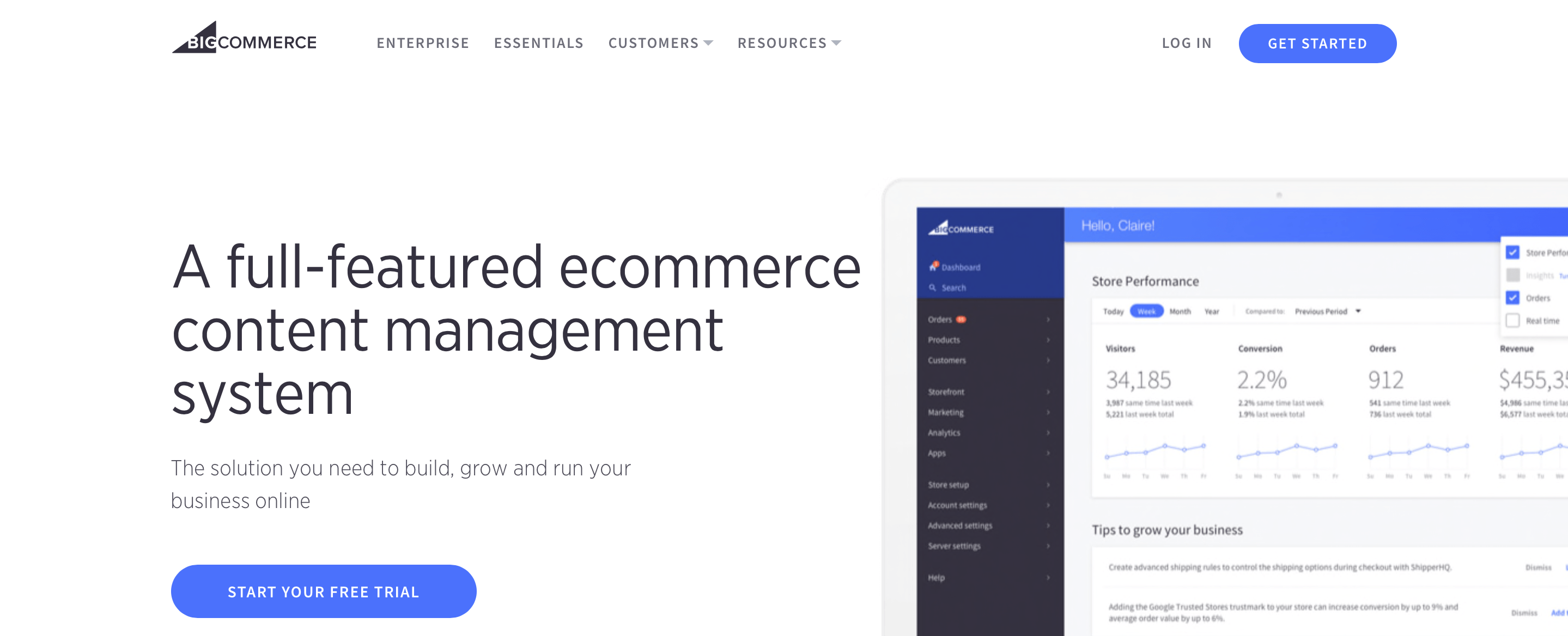
Sales copy should be written with the sole purpose of convincing your prospect to purchase your product, or sign up to your communications. By creating a call for action that gives prospects a logical route to take, you can accomplish this. HubSpot's sales copy is great. They focus on key pain points and speak directly with sales professionals. In order to make your sales copy as effective as possible, you need to keep these four key elements in mind.
Empathy
A well-written sales copy should express empathy for your audience. Empathy is the ability of understanding and relating to the needs of your audience. Empathic copywriting can make the difference between a sale and a bounce. A writer who understands the feelings and circumstances of the reader will make it more likely that they buy the product or service. To build trust and affinity, empathy can be used.
While it might seem sentimental to use empathy language when opening a sales letter, remember that every prospect is different and will have their own problems. Empathy isn't a feeling-good tactic. It's a marketing strategy that will lead to more loyal customers. Empathy can also make your brand more memorable. Avoid writing a sales pitch opener if you are concerned about it turning off your audience.
A well-written copy of sales is a bridge. It should ring with empathy and resonate with your target audience. Consider what makes someone fearful of failure and what their friends think. This is a great example to use when you write your copy. It will be hard to write boring sales copy ever again. You must start by empathizing in your sales copy. And don't let the writing become too dry or rote. You can try it next time. You'll thank yourself later for this strategy.
Empathy is demonstrated by understanding your prospects' problems. Think like your clients when it comes to buying decisions. Look for ways to make their lives easier. Empathy allows you to understand their motivations and help identify their problems. Empathy is an important part of marketing at many of the top companies in the world. Empathy is actually one of their core values. If your content is empathic, customers are more likely than ever to purchase from you.
Simple, concise and easy to comprehend
Writing short, simple and easy to understand sales copy is essential to attracting potential customers. Instead of trying to squeeze as much information into your copy as possible, think about how your product will improve people's lives. A high SEER rating AC unit will help save consumers money on their energy bills. Variable-speed AC units will adjust to the environment to conserve energy. Instead of listing specifications, the benefits that you offer will appeal to consumers.
A consumer's attention span can be eight seconds. This means that they are not likely to read long paragraphs. It is essential to communicate in the customer's language and to solve their problems to maintain their attention. Consumers only have eight seconds to pay attention. If you can get their attention in a few words, they will be more likely buy. When writing a long piece of sales copy, break it up into two or three shorter sentences.
Listen to your target audience when you're trying to sell a product or service. See Quora discussion threads and comments on social media. Write down the exact words that they use, and use those same words in your copy. Write down the features your target audience will enjoy after you have done this. A fitness center might have flexible personal training plans, a nursery area for babies, nutrition advice and support chats for mothers.
Remember that sales copy is meant to convince consumers to act. As such, persuasive language should resonate with the reader. Make your sales copy as engaging and compelling as possible by using powerful words that evoke an emotional reaction. You can encourage your audience members to act by using power words such "I" and “you” When using power words, remember that they have an additional advantage over other words in your copy.
Feature-benefit copy

In writing a sales copy, features-benefits are a critical part of the strategy. Benefits are what distinguish a product/service from the rest. Benefit-driven copy focuses on describing the benefits of a product or service, which is the most powerful way to entice potential customers to make a purchase. Benefit-driven copy allows writers to distinguish between features and benefits.
Sellers and buyers can both be inspired by the benefits of a product/service. Use features-benefit copy in your marketing materials to show how your product/service benefits buyers. The benefits of a product or service are more important than the features. Focusing on the benefits of your product or service will help you attract more customers and increase sales. But how do you make a benefits-driven copy? These are some helpful tips to create effective features-benefit copy.
It is important to know the difference between benefits (or features) and features (or benefits) in order to make your sales copy stand out. You need to understand the difference between benefits and features. Benefits describe the value of a service or product, while features explain what the feature does. In sales copy, it is important to emphasize the benefits more than the features. However, benefits are what differentiate a product from the rest. Customers must be convinced to purchase the product. Benefit-oriented copy can also be more persuasive. Be sure to emphasize the benefits.
If you use features-benefits as a motivator in your sales copy, your customers will love it. However, big-ticket items may require more complex techniques. In this case, you can mix feature-benefit copy with value-selling techniques and create a powerful combination. Follow these steps to easily incorporate features-benefit content into your sales copy.
Storytelling
Stories can be used in sales copy for two reasons: It retains the attention of the reader and increases its likelihood to buy your product. Storytelling taps into emotions through stories and makes it easier for readers to remember them. Your ideas will also benefit from the context provided by the story. Your reader will feel part of your story. These are just a few examples of storytelling that can help you create compelling copy.
When written well, storytelling can be effective at building brand loyalty and engaging customers. It uses metaphors and imagery to stir emotions. A well-told story can be just the same as direct response copy. The difference between direct response copy or storytelling is the way customers feel after they purchase. Also known as content marketing, storytelling is also known to be effective at generating interest from customers. Its power lies with its potential to generate sales and interest from prospective customers.
Depending on the product, a story can be either short or long. Use vivid words that evoke emotion in your readers. Every word in the story must compete against other words. A story that is too unclear will make the reader lose interest. Remember that storytelling is an important tool in sales copy. Here are three ideas to include stories in your sales copy.
Case studies. You can use stories to show how your product functions and why it is better than the alternatives. A good case study can be a story with rich details that entices the reader to finish reading the entire piece and try your product. It can also be a fictional story that illustrates your point. Either way, storytelling is essential for your sales copy. So, how do you use storytelling in your sales copy?
Consistency in brand voice

When it comes to writing for your business, you should strive for brand consistency across all of your communications. Consistency not only increases your chances of success but also improves the customer experience. Uncertainty in your brand voice can result in a weaker message, lower engagement and other negative consequences. A brand voice guide can help you ensure everyone in your company is on the same page.
Your brand voice is what you use to represent your business on all channels. It should be consistent across all communication channels, from email to social media posts. Developing a consistent brand voice ensures that customers recognize your brand when you use it across channels. Strong brand voices can help your copy stand out in the crowd and attract new customers as well as retain existing customers. Follow these steps to develop a strong brand voice:
The development of a brand voice is a continual process. Make sure you review it regularly. The brand voice should reflect your vision of how your audience will experience your brand. You should use the same brand voice whether you're writing content for your website or blog, your email, or printed material. Customers will be confused if you use a different brand voice in your communications. For example, if you want to create a consistent brand voice across all channels, you need to use a friendly tone.
You can begin a blog to develop a consistent brand voice. Mailchimp's blog is an example of a blog with a conversational tone. Although it isn't as formal as your brand voice guidelines for sales copy, it can still be fun and engaging. For instance, Oatly uses quirky copy and illustrations throughout its branding. Their packaging and captions on social media can be used to identify their brand voice.
FAQ
What is an SEO Campaign?
A SEO campaign is a collection of activities that are designed to increase the visibility of a specific webpage or domain name on search engines such as Google, Bing and Yahoo. These activities include optimizing page titles, meta description tags and URL structure.
Keyword research is a key part of SEO campaigns. This involves identifying keywords that are likely to increase organic traffic. Once keywords have been identified, they must be optimized throughout the entire website, from the homepage to individual pages.
Is link building still relevant to SEO?
Link building will always remain essential. But how you approach it today is different than how others did it 10 or 20 years ago. Businesses today face the greatest challenge in finding customers and selling. That's where search engine optimization comes into play.
Social media has become a key tool for businesses. Content marketing strategies have also become very important. Google penalizes websites with too much backlinks, so link building seems less effective. This is understandable since linking to too many other sites will likely mean that there isn't much original content on your site.
These factors all mean that link building is no longer as important for ranking your website.
What is an SEO strategy?
Your website's content is an integral part. You won't be able to rank high enough in searches if your website doesn't provide relevant and useful content.
SEO campaigns improve your website through the acquisition of links from other websites that point to it. It also includes social media optimization, which involves using Twitter, Facebook, and LinkedIn to help drive traffic and increase brand awareness.
These will increase your website's visibility and help you rank higher in search engines. SEO campaigns have a primary focus on building high-quality links back to your website so that Google recognizes that it is valuable.
Statistics
- : You might have read about the time that I used The Content Relaunch to boost my organic traffic by 260.7%: (backlinko.com)
- Which led to a 70.43% boost in search engine traffic compared to the old version of the post: (backlinko.com)
- These guides are designed and coded 100% from scratch using WordPress. (backlinko.com)
- Sean isn't alone… Blogger James Pearson recently axed hundreds of blog posts from his site… and his organic traffic increased by 30%: (backlinko.com)
- And 90%+ of these backlinks cite a specific stat from my post: (backlinko.com)
External Links
How To
How important SEO off-page is
Optimize your site for search engines like Google, Bing, and Yahoo!
While site optimization is important, there are other aspects to optimize your website. These include, among others:
-
Your site's design (does your site load quickly?
-
Content quality and quantity
-
Social media presence
-
Link back to your site
Optimizing your website requires you to consider many factors. You'll notice huge increases in traffic and rankings if these things are done correctly.
What is link-building? How does it work? What are the pros & cons?
We explain what a link building strategy is, how it works, and what benefits it could bring to your site or brand.
-
1. Why do I need link-building strategies? Research has shown that link building is one of the best ways to increase traffic to your website and improve page rankings. Most businesses don’t realize this until they create a plan to increase their rankings and build links. You can read on to find out why.
-
What is a link-building strategy? And how can it benefit my company?
An link building strategy is essentially the creation of links from sites or directories other than your own. It basically involves looking for relevant websites and contacting their owners to request a link to your website. There are two types of link building strategies: "outreach" and "content marketing." Outreach is generally done manually while content marketing is automated using software. Both methods require some degree of planning and time investment. They can yield great results over time. Let's discuss each method in detail.
-
What are some of the pros to a link building plan?
The greatest benefit of a link building strategy for your company is its ability to reach out to others who have been trusted. This saves you the effort of convincing people your company is worth linking. This will help you save time and effort.
-
Are there any disadvantages of a link building strategy too?
The biggest disadvantage to a link-building strategy is the fact that you need to have enough authority before you try to pitch yourself. Potential partners must see that you are valuable. So before you start pitching other companies, first try to find out whether they would actually like to partner with you.
-
How do I pick a link building strategy to use? What is better: outreach or content?
This depends on what kind of relationship you want to establish with various companies. Outreach for B2B clients is a good option as it provides you with the opportunity to meet new people and build trust. If you're looking to partner with large retailers, content marketing can be used to generate leads and promote your sales.
-
What should I look for when choosing a link building strategy? Is there anything else I should keep in mind?
These are some things you should consider when choosing a strategy for link building:
Who do you target? It depends on what niche you're in, the type of site that you will pitch can vary greatly.
Are you selling products online? If so, you might be interested in getting links from blogs that discuss fashion, beauty and food. If you sell services, you can target local directories like Yelp, Citysearch and others.
What are your goals? It is important to select a strategy to increase SEO rankings. If you don't, you'll just be spreading low quality link around.
What does your budget allow? A lot of people think they can use both content marketing and outreach at once but this isn't true.
You can only do one thing at a time. For instance, you cannot write and post blog articles all day long.
-
How do I start my link-building strategy?
You must decide how much time and money you will invest into a link-building campaign. Start small, and you will be amazed at how far you can get. You can then scale up your efforts once you have determined which link building strategy is best for you.